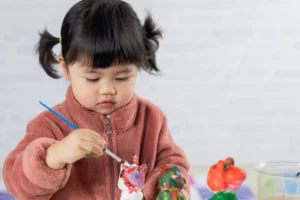How “STEAM” Activities Give A Head Start To Your Toddler
![]()
- Posted by abrakadoodle.com.sg
- Categories Early childhood development
- Date 18 January 2023

STEAM activities for toddlers is an educational approach that focuses on introducing young children to the concepts and principles of science, technology, engineering, the arts and mathematics through age-appropriate, hands-on activities and experiences.
The goal of STEAM activities for toddlers is to provide a foundation for children’s future learning and to help them develop critical thinking and problem-solving skills, creativity, and innovation at an early age.
STEAM activities often involve activities that allow children to explore the world around them, experiment with materials and ideas, and make connections between different subjects. These activities may include playing with building blocks to create structures, painting to explore colour and texture, and singing rhymes to learn about rhythm and sound.
STEAM activities for toddlers can be provided right at home. Helping future-proof toddlers’ skills, and make them confident life-long learners by giving them unlimited possibilities for hands-on, playful STEAM learning.
Table of Contents
ToggleAdvantages of STEAM activities
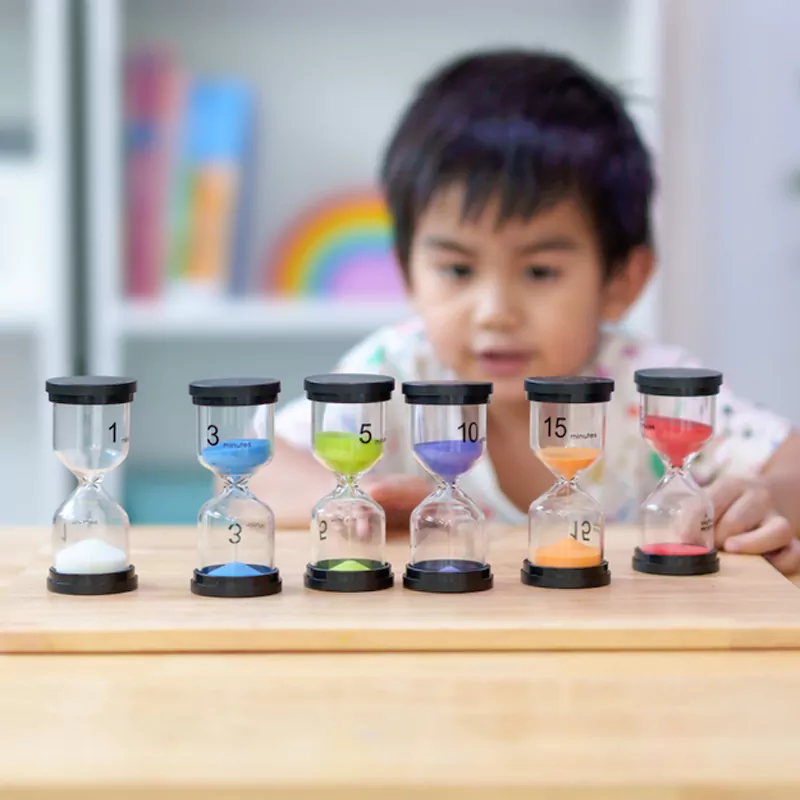
Promote creativity and problem-solving skills
Cognitive learning activities encourage children to think outside the box and come up with creative solutions to problems. These activities also help children develop critical thinking and problem-solving skills that they can use in their daily lives.Enhances cognitive development
STEAM activities require children to use their brains in new and different ways, which helps to stimulate brain development. These activities can also improve children’s memory, attention, and concentration.Build confidence and self-esteem
When children are able to successfully complete a STEAM activity, it can give them a sense of accomplishment and boost their confidence and self-esteem.Encourages teamwork and social skills
Many STEAM activities involve working in small groups or teams, which helps children develop social skills such as communication, cooperation, and collaboration.Provides real-world connections
STEAM activities often involve hands-on, experiential learning, which helps children make connections between what they are learning and the real world. This can make learning more meaningful and engaging for children.Motivates a love for learning
STEAM activities can be fun and engaging, which can spark a love of learning in children. This love of learning can carry over into other areas of their lives and help them become lifelong learners.Promotes diversity & inclusivity
STEAM activities often involve a diverse range of materials and approaches, which can help to promote inclusivity and diversity in relationships and in the classroom. Children of all abilities and backgrounds can participate and feel valued.Prepares toddlers for the future
The skills and knowledge gained through enrichment programs can help prepare children for success in the 21st century. The jobs of the future are likely to be highly technical and require strong skills in science, technology, engineering and math.Combining Process Art with STEAM activities
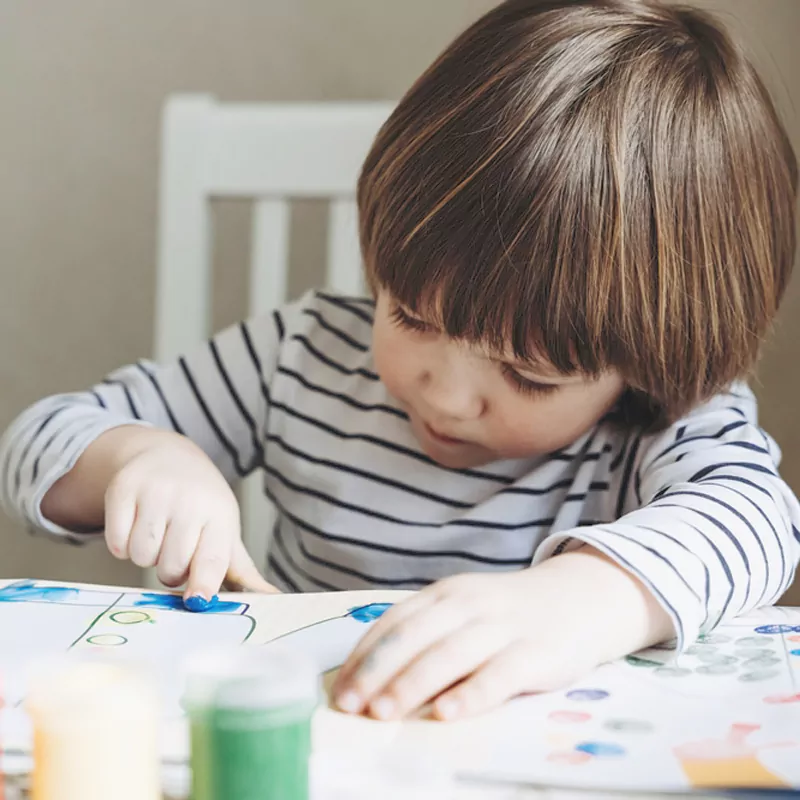
Process Art is a great way for young children to express themselves creatively and explore materials in an open-ended way. It allows toddlers to focus on the process of creating rather than the end product, this approach helps build confidence and develop problem-solving skills.
Here are a few simple Process Art activities that you can challenge your toddler with:
Painting with unconventional tools
Instead of using brushes, try using sponges, cotton balls, or even vegetables to apply paint to paper. This allows children to experiment with different textures and see how the paint behaves when applied in different ways.
Sculpting with playdough
Playdough is a classic material for process art, as it can be moulded and shaped in endless ways. Encourage your child to use her imagination and create whatever she likes. Your child can use tools such as rolling pins, cookie cutters, and plastic knives to add texture and detail to her creations.
Collage with recycled materials
Gather a collection of recycled materials such as cardboard, paper, and magazine clippings and let your child create a collage. She can glue, tape, or even staple the materials together to create a one-of-a-kind piece of art.
Nature art
Take a walk outside with your child and collect natural materials such as leaves, stem sticks, and rocks. Encourage your child to arrange these materials in a way that creates a picture or design. She can use glue or tape to hold the materials in place.
Remember, the most important thing is to let your child lead the way and have fun. Process Art activities are meant to be open-ended and allow for exploration and creativity.
Making "STEAM" activities part of enrichment programs
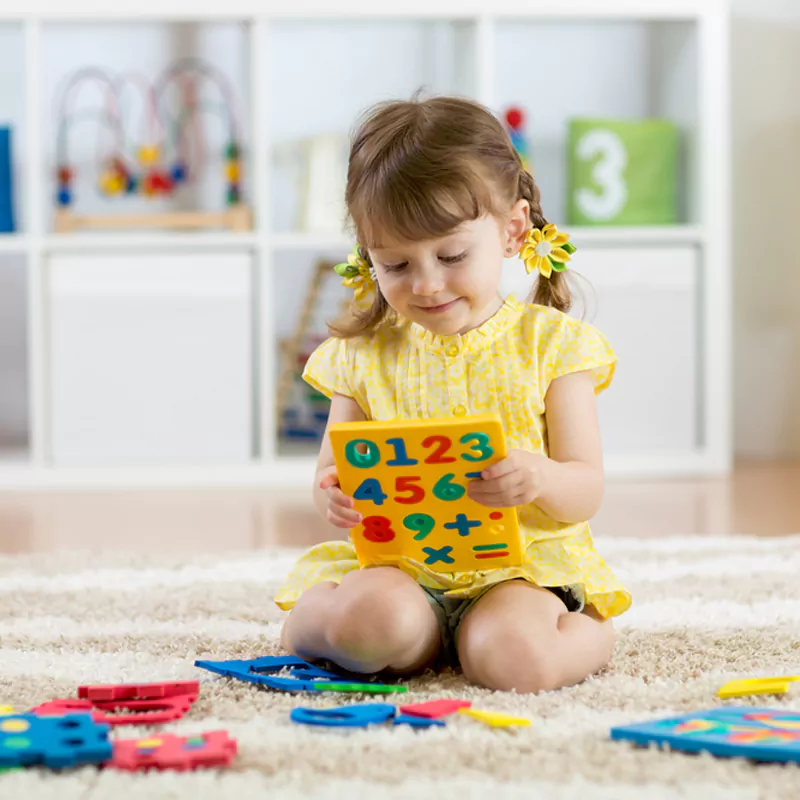
This approach focuses on integrating five subjects in a way that encourages toddlers to think critically, solve problems, and explore real-world issues from an early age. As part of enrichment programs, STEAM-based activities provide young children with valuable skills and experiences that will play a key role in preparing them to face and succeed in the rapidly changing world they will encounter.
STEAM activities encourage interdisciplinary thinking by bringing together subjects that are often taught separately. This approach enables young children to see the connections between different fields and how they can be used to resolve real-life problems.
For instance, a child fascinated by biology might begin to connect and start thinking about how engineering principles can be applied to the design of say, medical devices. Or another child with a keen interest in art might learn how math and science can be integrated to help create new concepts in digital graphics.
The primary aim of STEAM activities is to foster creativity and encourage toddlers to think outside the box. This is particularly important in a world, where the ability to come up with new ideas and approaches is increasingly seen as an invaluable trait.
Many of the high-paying work opportunities of the future will require people who have a combination of both technical and creative skills. When there are gaps in learning, STEAM activities can be designed to ensure that children bridge the gaps, and nurture to grow up with these skills intact. For example, a child participating in age-appropriate STEAM activities learns about how to program a computer, design a website, or create a piece of art using simple and easy-to-master digital tools.
Exciting Art and Craft for toddlers
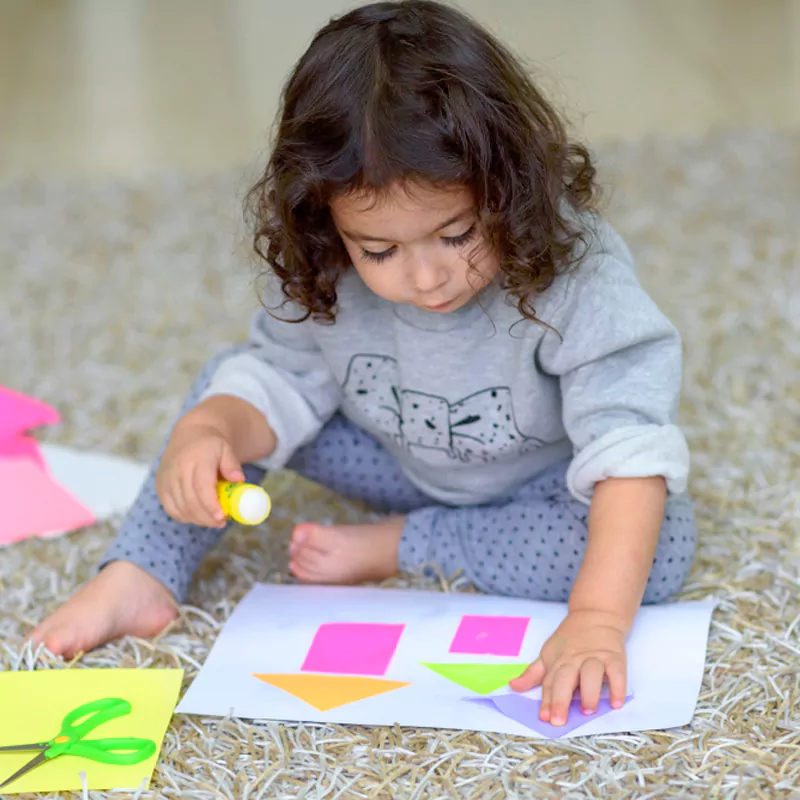
Finger painting
Finger painting is a classic art activity that toddlers love. All you need is some washable paint and paper. You can make the paint easily at home by using food colouring mixed with a little bit of water, simple and inexpensive. Encourage your toddler to make different marks and shapes with her fingers and to mix the colours by herself. This activity is not only fun, but it also helps toddlers develop their fine motor skills and creativity.
Playdough
Playdough is another classic art activity for toddlers. You can make your own playdough at home with flour, salt, water, and food colouring. Encourage your toddler to roll, squeeze, and shape the playdough into different objects. You can also provide her with small cookie cutters, rolling pins, and other tools to create her own creations. This activity will help your toddler build hand strength and improve fine motor skills.
Sticker art
Toddlers go overboard when it comes to making those cute little stickers which they end up using in a variety of other art and craft activities. Provide your toddler with a large piece of paper and a variety of stickers, and let them create their own sticker art. Give her a choice of creating a scene, or a picture, or just getting on with sticking the stickers randomly on the paper. This activity is great for developing creativity and some original works.
Cardboard tube art
Don’t discard those cardboard tubes and tissue roll tubes because these can be transformed into a variety of art and craft projects. You can provide your toddler with some cardboard tubes, paint, ribbons and streamers, and let her create her own masterpieces. Encourage her to paint the tubes, cut them into different shapes, or glue them onto a piece of paper to create a 3D effect. This activity is great for creativity and for fine motor skills.
Collage making
Collage is a fun art activity for a toddler. Provide your toddler with a variety of materials, such as magazines, newspapers, tissue paper, and glue, and let her create some unique collages of her own making. Encourage her to cut and paste the materials onto pieces of paper to create a pattern, a picture or a design. This activity is great for creativity and for developing precision skills and movements.
Chalk art
Chalk is a great art medium for toddlers because it is easy to use and easy to clean up. You can provide your toddler with some sidewalk chalk and let them create their own chalk art on the driveway or sidewalk. Encourage them to make different marks and shapes with the chalk and to mix the colours. This activity is great for creativity and fine motor skills.
Salt art
Salt art is a fun and easy art activity for toddlers. All you need is some watercolour paint, salt, and paper. First, have your toddler paint a picture with watercolour paint. Then, sprinkle salt over the wet paint and let it dry. The salt will absorb the paint and create a unique texture. This activity is great for creativity and helps toddlers learn about different
Nature art
Nature is a great source of inspiration for art projects. You can take your toddler on a nature walk and gather natural materials, such as leaves, sticks, and rocks. Then, provide them with a large piece of paper and some glue, and let them create their own nature art. This activity is great for creativity and helps toddlers learn about the world around them.
Experimenting with new ideas and concepts
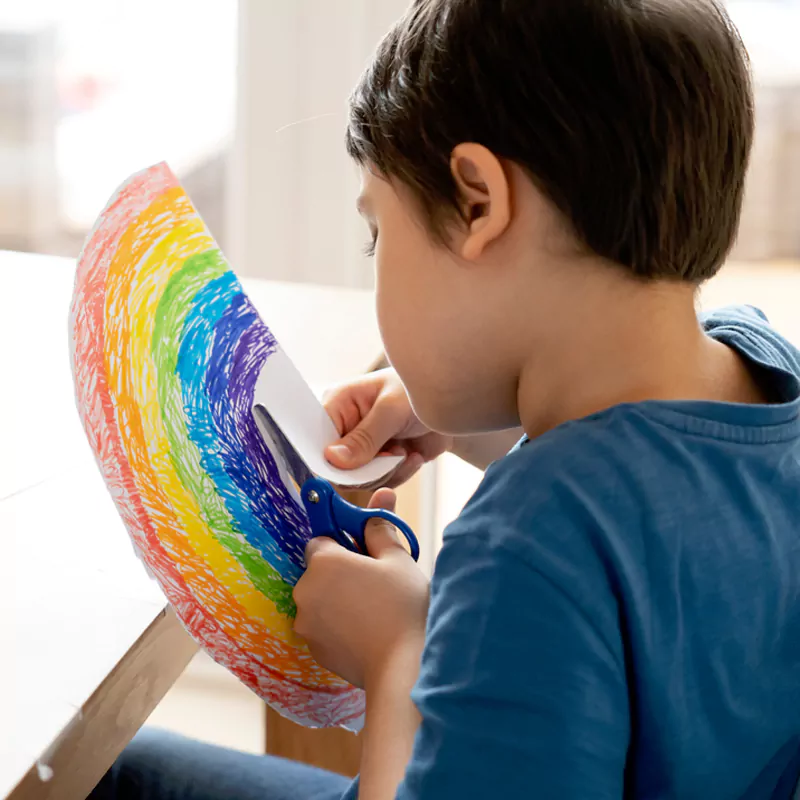
One of the more difficult tasks of a parent has always been to keep their toddlers engaged and entertained. But we’re sure that you are already doing a great job. Painting, building and crafting are great for improving toddlers’ motor skills and as well as helping develop their vocabulary. Getting messy with your toddlers is huge and a lovely bonding activity.
Go old school with art and craft for toddlers. Let them get creative on the walls of the house or mess around out on a balcony, it really doesn’t matter. You can always involve your toddler in the cleaning up later on.
After all, learning activities for kids are a fun way to introduce young children to scientific concepts. For instance, seeing their faces light up when they mix colours and see how different shades are created, or exploring how different materials can be used to create texture in the artwork. This in itself is a thrilling experience.
STEAM activities are an excellent way to engage toddlers as these programs make learning, interactive, hands-on and fun that can be difficult to achieve in a traditional classroom environment.
About Abrakadoodle
Abrakadoodle is dedicated to supporting children in the early years and building strong foundations to ensure they get the best head start. Process Art learning experiences, for instance, inspire toddlers and young children to think differently, be innovative, and explore new ways to learn about interesting things found in the real world.
Our art lessons also change the way a child discovers and imagines. Igniting her mind to think, play and learn like never before. If you like to enrol your child in our art classes or find out more about why art classes for childhood development is important, give Abrakadoodle a call. Or better still, make an appointment with the head of a centre near you.
You will get hands-on exposure to an experience that will make you see art therapy in a way that adds value to your child’s life.
Please note: Abrakadoodle classrooms are thoroughly sanitized every day — the tables, the chairs, the children’s activity stations and everything else the child might touch is made safe and clean. They also wear a mask, wash their hands frequently, and practice social distancing.
Frequently Asked Questions
STEAM education for toddlers refers to an educational program that emphasizes the integration of science, technology, engineering, the arts, and mathematics during the early stages of development. The goal of STEAM activities for preschoolers is to provide a comprehensive and hands-on learning experience that is engaging, fun, and stimulating. This type of education is directed towards future preparation and hence focuses on developing critical thinking skills, problem-solving skills, creativity, and imagination from an early age. STEAM activities for toddlers often involve hands-on experiments, imaginative play, building, and creating and can help foster a lifelong inclination for learning and discovery.
STEAM-based toddlers activities help children develop these fundamental skills:
1. Problem-solving skills: Challenge toddlers to think critically and creatively is what a STEAM activity is designed to promote.
2. Fine motor skills: Many STEAM educational games require the use of fine motor skills, such as cutting, pasting, and building, which help develop hand-eye coordination and dexterity.
3. Creativity and imagination: These activities encourage toddlers to use their imagination and be creative in their approach, which is essential for future preparation and success in both their personal and professional lives.
4. Science and math skills: STEAM activities are designed to introduce toddlers to basic science and math concepts, along with process art integration, in a fun and engaging way. This can help lay the foundation for immense progress in these subjects.
5. Communication skills: These developmental activities often require collaboration and communication, which help develop social skills and the ability to work effectively in teams.
Yes, there are a couple of STEAM activities that can be introduced to children through a home-based learning approach. Listed below are some of the best steam activities for toddlers that can be practiced at home:
- Building structures using blocks, legos, or other building materials.
- Toddlers can explore the properties of different materials by observing how they react to heat, cold, and water.
- Encourage children to create their own art projects, such as drawings, paintings, and collages.
- Fun activities for toddlers such as cooking and baking helps children learn about measuring, following instructions, and the science behind preparing food.
- Take children on nature walks and encourage them to observe and collect natural materials. Children can also practice counting and sorting the materials they collect.
This approach to education integrates science, technology, engineering, arts, and mathematics into STEAM activities for preschoolers by connecting the subjects together in meaningful and relevant ways.
For example, encourage children to design a bridge using simple materials like popsicle sticks and glue. This activity would integrate engineering principles with creativity and problem-solving.
By integrating different subjects in this way, children gain a deeper understanding of how the subjects are connected and how they can be used together to solve problems and create new solutions.
The benefits of incorporating process art in STEAM education include the following:
- It fosters creativity and imagination by allowing children to experiment with and explore different materials and techniques.
- It enhances the cognitive capabilities of children, including concentration and memory retention.
- By focusing on the process of creating art rather than just the final product, process art activities can help children develop an appreciation for the process of learning and creativity.
- Hands-on, experiential learning is a common component of STEAM activities, which assist kids in integrating what they are learning into the real world.
- Through process art integration with STEAM activities, children can freely express themselves and develop their own unique artistic style, which helps to build their self-confidence and self-esteem.
You may also like
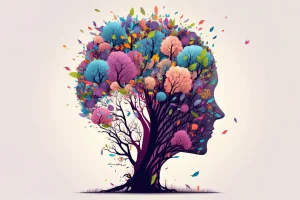
The Impact Of Colour On A Child’s Development
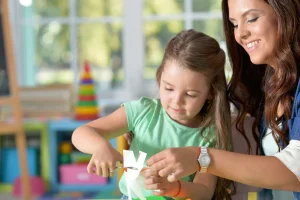
How Collage-making Activity Helps A Child To Think Creatively
